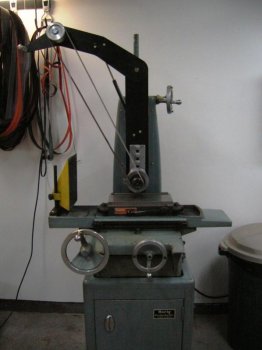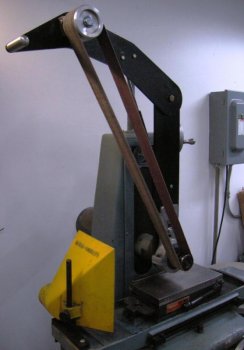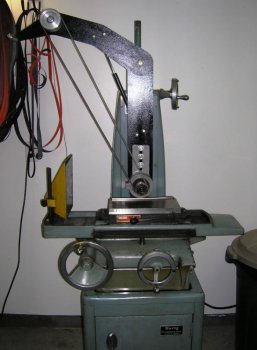Boatbuilder.... Here's my take on stones versus belts:
In my opinion the advantages are many for a belt conversion. Some will argue that a stone is more accurate, but my surface grinder, with the belts will hold a .0005 tolerance. I think it has a lot to do with the type of contact wheel used with a belt setup.....it MUST be a very hard wheel. I feel that anything short of 100 durometer is not hard enough....some folks even use solid aluminum or steel for their contact wheel.
Another advantage is that I do not have to buy, or keep the stone wheels in the shop....the good ones are expensive, and it's just one more thing that I have to buy/replace. With the belt setup, I can use any belt/grit that I use on my Belt grinders, and change them just as easily as I do on the KMG or Square Wheel.
I also think that using a belt is MUCH faster than a stone....when I first got my surface grinder, it was setup with stones, and the most I could remove in a pass was about .002"....and that was putting a strain on the machine....and took FOREVER to grind anything. After switching to belts, it's not uncommon for me to take .010 or more at a pass with a 50 grit belt.
Back to the contact wheel issue....I cannot stress enough just how important it is to use at least a 100 durometer contact wheel. The reason is.... there is always "down pressure" when surface grinding, if the contact wheel is soft (less than 100 durometer) the wheel will "cup" on a grinding pass, and your work piece will come out with a convex surface. (the hardest contact wheel that I have ever found commercially is a 90 durometer...and trust me, it is not hard enough)
Finally, consider carefully, the diameter of the contact wheel you use...I would recommend at least a 6" wheel, especially if your surface grinder is a manual model. (had the folks at SunRay custom make a 6", serrated, 100 durometer urethane wheel for me) A small contact wheel will cause serious "divots" in your work piece, simply because a person cannot maintain a smooth even speed throughout a grinding pass, coupled with the fact that the radius that comes into contact with the work piece surface is much tighter than on a larger contact wheel.







